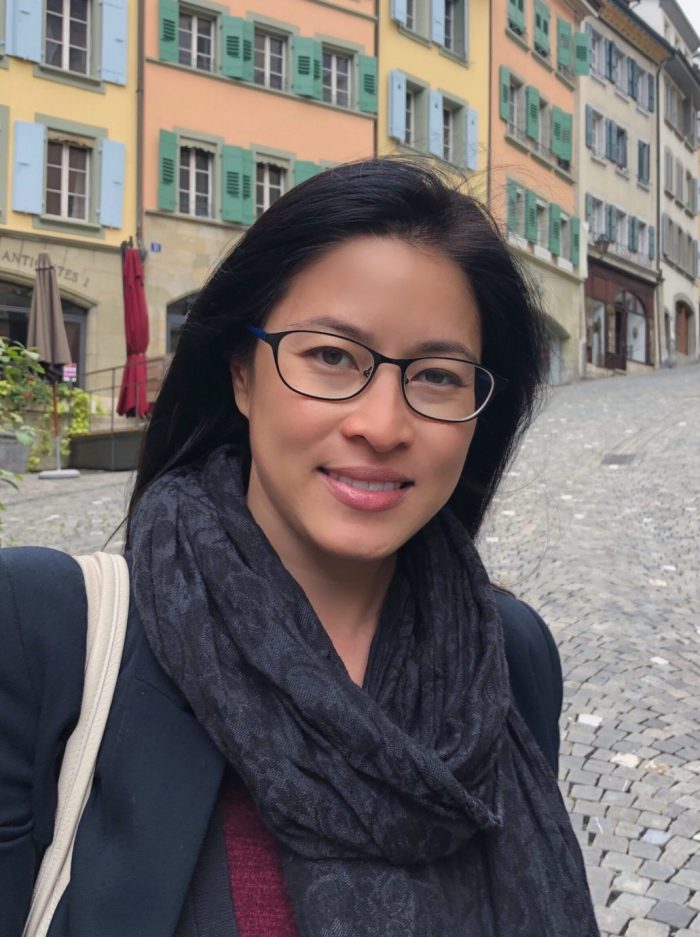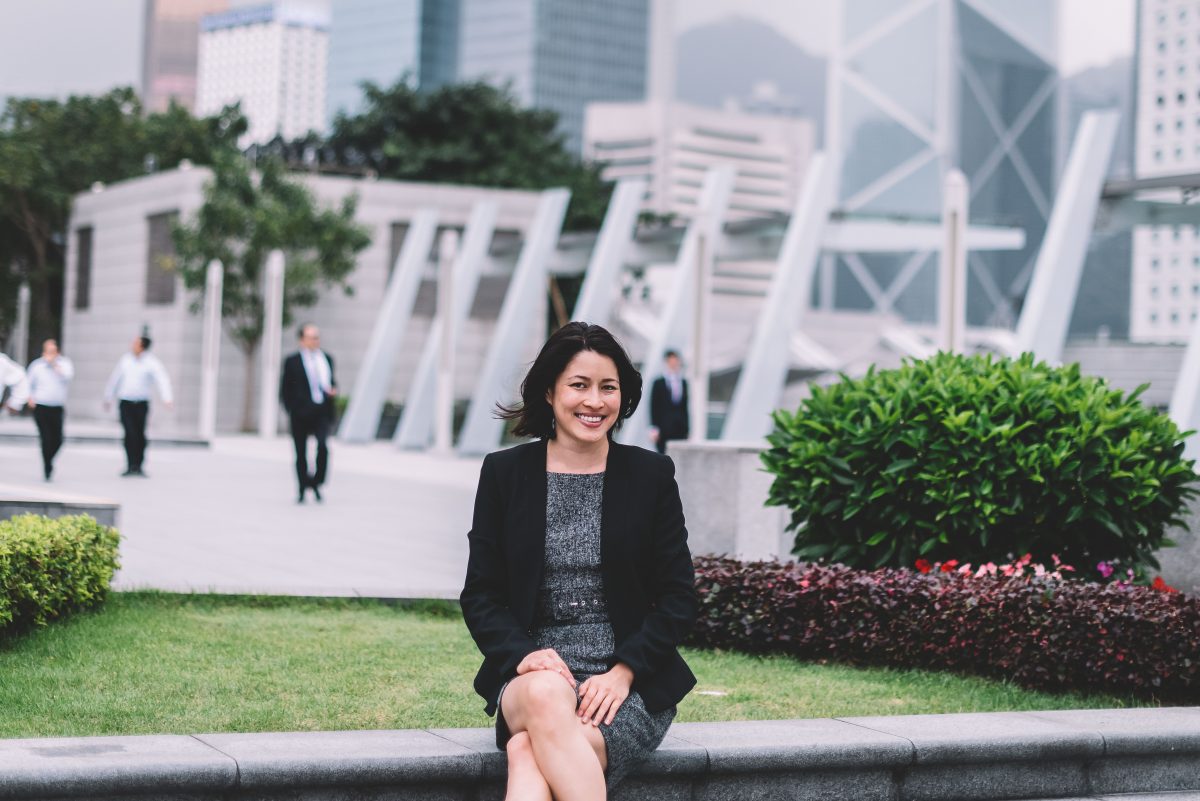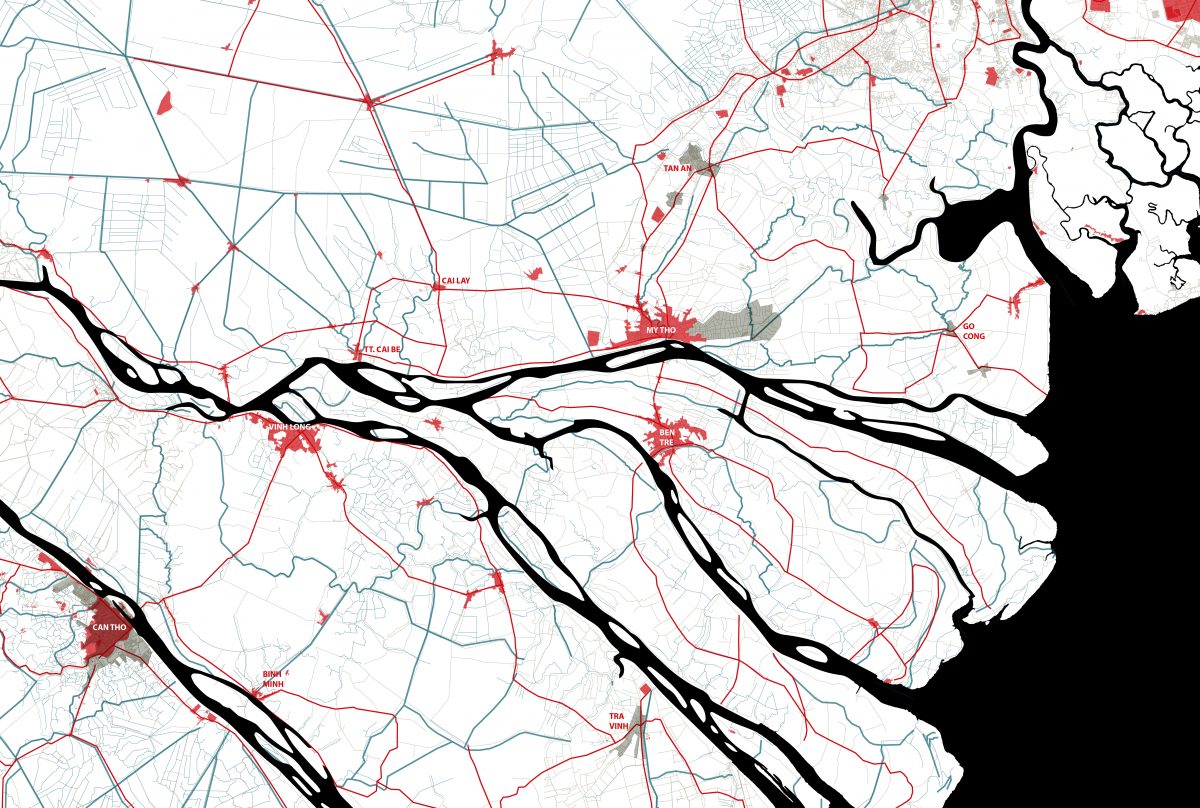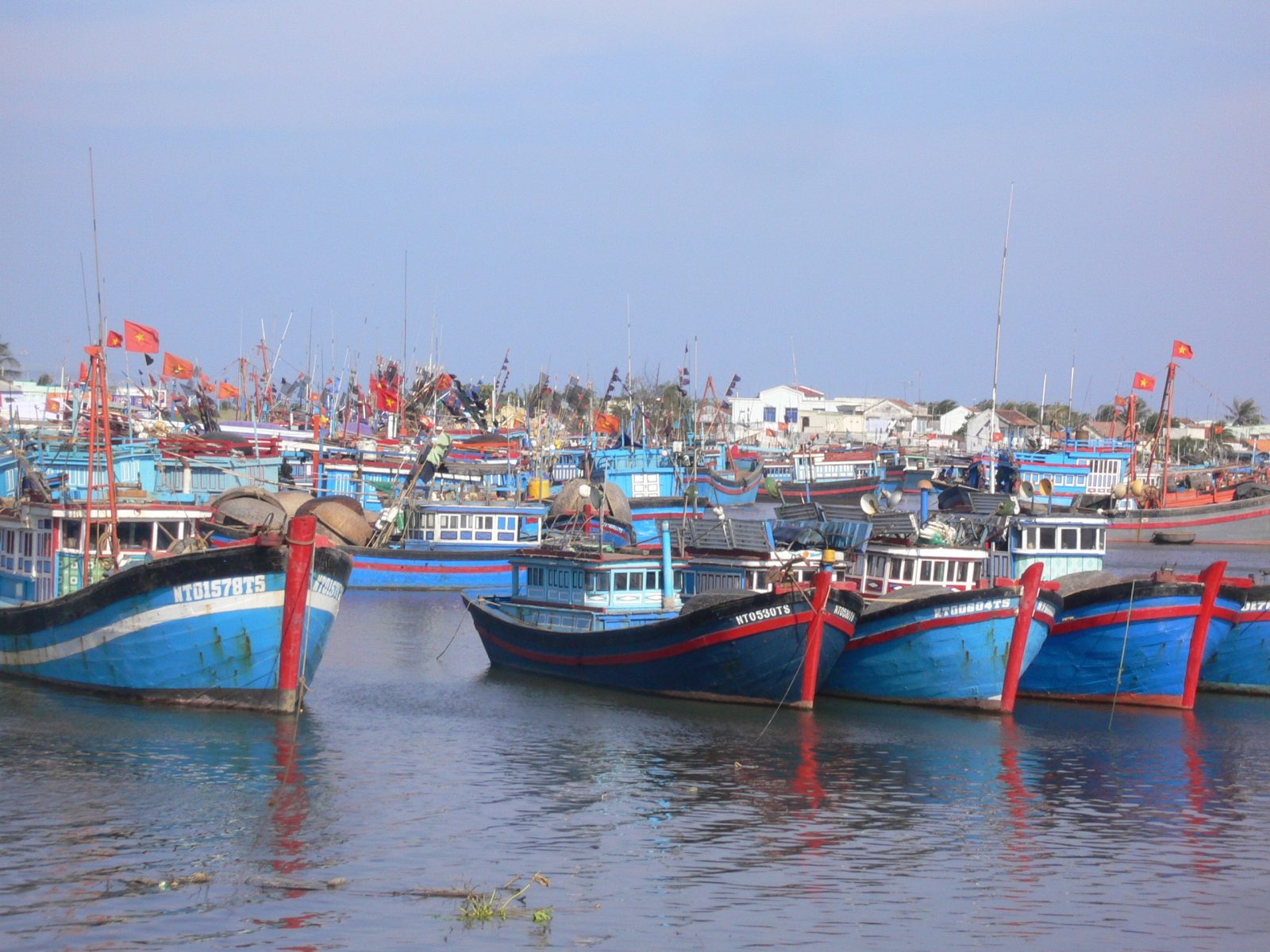Sylvie Tram Nguyen on Designing New Futures in Vietnam and Abroad
Sylvie Tram Nguyen (BArch ’05) is an urban designer that’s shaping cities around the world through her personal approach to sustainability. The scope of her past projects include integrated masterplanning and urban design in urban-rural regions in Asia, mixed-use commercial development, housing and town planning, transit-oriented high-rise blocks, as well as landscape and waterfront concept designs. Currently working on her Ph.D. at Ecole Polytechnique Federale Lausanne, EPFL, under Lab-U in Switzerland, her dissertation analyses diffused cities in the Mekong Delta in Vietnam, and researches water adaptive strategies in response to the impact of climate change and sea level-rise. We caught up with Sylvie to discuss her teaching, travels and work in the Ninh Thuan Province of Vietnam.
 Interview with Sylvie Tram Nguyen
Interview with Sylvie Tram Nguyen
Q: Why did you choose to study architecture and urban design?
I accidentally discovered architecture as a profession while sitting in the back of my brother’s car. His friend Khoa had left a set of architectural drawings with site photos, and as I looked through them, a whole new world opened. After some inspiring discussions with Khoa, I decided to enroll at the same architectural program he graduated from at Woodbury. What inspired me to change my major to architecture was the fact that it combined my love for art and drawing with something more pragmatic that’s related to the sciences, like building technology. Learning how to create habitable spaces through a conceptual approach followed by construction through a studio-oriented method – that act of creating space through an iterative process of sketching, model making and drawing – became the foundation of learning which helped me to grow my passion and skill in architectural design.
On the other hand, the field of urbanism, and urban design in particular, sparked my curiosity after a summer study abroad in Barcelona and Paris with Professors Gerard Smulevich, Nick Roberts and Teddy Cruz. With our studio’s fieldwork focused on Paris’ bordering conditions along its greenbelt motorway, I was fascinated by the works of French architects Tomato, through their research and city mappings illustrated in “La Ville du Peripherique,” a book that I still refer to as an exemplary case for uncovering Paris’ bordering territorial conditions as it relates to urban periphery theory. During my bachelors thesis, I began exploring urban theorists, including Kevin Lynch, Christopher Alexander and Joel Garreau. Prof. Nick Robert’s kind guidance to these authors and Prof. Paulette Singley’s work on Los Angeles were key to igniting my interest in urbanism. Their work opened another realm of reality beyond the building envelope, by addressing the surrounding urban territory and how various actors affect the city and its inhabitants. My design focus expanded from the building into the city, and onto the countryside. A year after graduating, I began exploring urban-rural conditions, particularly addressing the effects of suburbanization in Massachusetts’s local communities while studying urban design at Harvard.
Q: You have a diverse background, from teaching to working as an urban designer around the world. What do you believe is the connection between academia and practice?
The field of urban design opened this world of people and places which allowed me to travel the world to explore its many interesting, yet challenging phenomena – thanks to the assistance of various funding, grants and scholarships throughout my career. By partaking in activities such as studying, teaching, and practicing design, I have had the opportunity to practice on, and lecture, about diversified projects and research agenda in places including the US, Hong Kong, Vietnam, China, Mumbai, Paris, New Zealand, Belfast, Morocco and more.
After graduating from Harvard in 2008, I was more interested in exploring research for publication or teaching undergraduate studios, rather than gaining direct practical experience. After the market crashed, I launched my urban design career at Arup, a multi-disciplinary engineer firm by moving to Hong Kong. Back in 2010 when investments in Asia were high, it was the opportunity of a lifetime to partake in a multi-level and multi-scalar projects in Vietnam at such an international office. In hindsight, the experience accumulated from working on these projects in Ninh Thuan Province has become a driver for my academic pursuit up to date. As lead urban designer in a team of planners, engineers, sustainability experts and economists, this project exposed me to the wide array of issues and challenges covered across all the practices that inform the future of built territories in urban-rural landscapes.

During the process, some challenges surfaced that made me realize that practice alone was not enough. That research needed to play a hand in the decision-making processes I had witnessed. Construction was driven by either the government, market demand or other investments. In 2014, I pursued lecturing full time at Hong Kong University in the belief that academic research should better inform decision making in future projects, while practitioners, designers and builders ought to convey how projects are implemented on the ground and its performative outcome – or consequential impact. By wearing the “intellectual hat,” I explored how analytical findings about existing urban conditions are compared globally across research in order to gain new insight (whether opportunity or challenge). Newfound research is often exchanged between fields to transform existing project processes and improve future outcomes. In turn, the challenges in implementation mechanisms (however related to business, finance and market trends) must be uncovered from the practicing side – so that a reciprocal relationship between research input and implementation output could be strongly established to closely foster evolving processes within the built environment over time.
Q: What project have you enjoyed working on most and why?
The most significant project which I have had the pleasure of working on includes Ninh Thuan Province, located along the eastern Vietnamese coast to the North of HCM City. Partaking in this project as one of the lead urban designers brought me closest to the ground with the people living there, which helped me observe the territorial challenges that needed to be addressed socially, economically and environmentally. As one of the poorest provinces in Vietnam, Ninh Thuan is faced with the ecological threats from climate change and sea level-rise in a currently socio-economically vulnerable region. Although addressing the consequences of future planning under a environmental risk zone was well beyond the scope of our project commission, it raised relevant issues which I continue to discuss in my current research endeavors.
Arup’s integrated approach also inspired me to work beyond my comfort zone as a designer. Under a multi-disciplinary team, we formulated key performance indicators for project staging by proposing pillars for implementation around quality of life, economy, environmental sustainability, transportation networks and climate change resilience. These pillars were in turn geographically mapped and strategically proposed in layers pertaining to an integrated coastal master planning staging process. The project lasted over three years and during that time, I had the opportunity to work very closely with the municipal government as well as between the Arup Vietnam and Hong Kong offices across a team of designers, planners in transport, engineers in civil, sustainability experts and urban economists.
Over the years, we covered three stages of commissions starting with the Socio-Economic Development Plan, to the Coastal Development Masterplan and finished with the Detailed Master Plan zones for construction. It’s wide scope and iterative process across scales exposed me to real pressing contextual issues ranging from the region’s ecosystem services to the design of new town urban-rural blocks and proposed civic gardens. What cultivated my interest in the region and its geography is tied to how farmers’ livelihoods directly relates to productive agriculture and aquaculture landscape systems. Village settlements (defined as unplanned rural areas) include very vibrant domesticated lifestyles between families of primarily farmers that exchange complex local knowledge accumulated to ensure seasonal harvests. I essentially discovered the charm as well as the struggle endured across families behind their all so joyful smiles, and it was also reflected through the vibrant building colors and of silky fabric worn on the streets. Seeing that the economy there was doing so poorly despite such a vast natural landscape and proximity to such vast natural resources, I wondered how we as professionals could spatially improve their socio-economic conditions, beyond the standard model of continued urban expansion, while promoting socio-economic equity.

Mekong GIS Mapping Territories, Ph.D. thesis by Sylvie Tram Nguyen
Q: With changes to climate, technologies, and construction techniques, how do you think architects and designers will adapt ways of practicing to advance the profession?
I believe that we are entering in a much more environmentally and socially conscientious era full of debate, and that the Business as Usual models in economic and industrial expansion just won’t cut it anymore. There is a dire need for more transparent cross-collaboration; in fact, future projects must be approached from interdisciplinary exchange across different fields with research in the sciences (i.e. engineering), social sciences (i.e. sociology) and humanities (i.e. culture and history) must be cultivated with, in addition to the design professions in architecture, planning, landscape and urbanism.
Under the increasingly uncertain atmosphere ensuing the global environmental crisis as well as the subsequent questions raised by the COVID-19 pandemic regarding our quality of life and usual urban practices; it is more important than ever to advance our approach towards a more critically observed environment and socially conscientious new direction. We as designers, builders and researchers consume a energy huge footprint on built territories and thus must take responsibility for our actions to better imagine the future of urbanization.
The challenge of rapid population expansion from rural to urban territories (with the urban population surpassing 50% around the world) has made current urban models increasingly obsolete: there is a need to re-examine the impact of cities and urban expansion to better adapt to future pressure for economic as well as population growth – all under the circumstance that our planet is ever more under environmental degradation. Undeniably, the current focus is on sustainability and ecologically-oriented approaches influenced by schools of thought addressing “Design with Nature” (Ian Mc Harg) such as Landscape Urbanism and Ecological Urbanism (Harvard). Furthermore, research in remote sensing technology GIS and tracking our smart devices is advancing Big Data, informing how we, inhabitants or consumers alike behave across built and natural territories through accurate spatial geographic mapping. This mapping technology can serve to best inform decision makers at the table and improve the future approach to urbanization.
Q: You’re currently working on your P.h.D. at EPFL under the Laboratory of Urbanism. Can you tell us why you are pursuing a P.h.D. and more about your dissertation work?
My experience in Ninh Thuan shed light into my need to better address social and environmental resilience, it nurtured my newfound interest in ecosystemic landscapes found between the urban rural territories and lead to the questions posed by my current thesis dissertation. My dissertation research in the Vietnam Mekong Delta essentially addresses very similar issues discovered in Ninh Thuan, however augmented in scale and severity due to the intensified impact of adverse weather and coastal conditions posed by its delta estuary.
Titled “Water Ecosystemic Threats within the Mekong’s Diffused Urban-Rural Territories,” my thesis regards the Mekong Delta in the Southern end of Vietnam opening to the South China sea. Once known as the ‘rice bowl’ of Vietnam, the Mekong Delta contributes 60% of Vietnam’s GDP in agriculture and 40% in aquaculture. Nevertheless, climate change has increased intensities of drought, land subsidence and salination, and economic liberalization has accelerated the rate of urbanization and industrialization. According to my initial findings, the Mekong’s territorial organization has been rapidly transformed due to water-related processes. And I would like to address my hypothesis regarding the contradictory relationships found between urban centralization and rural decentralization driven by water-oriented processes. My research contribution aims to produce knowledge about the delta’s natural and artificial transformation over time, whereby a project(s) shall be elaborated via research-by-design methods of generating territorial and situational perspectives.

Q: What advice would you give to students and designers who aspire to follow a similar career path?
As commencement speaker representing the main student body back in 2005, my speech titled “Education verses the Corporate World,” has, in retrospect, become my own inner guiding voice over the years. It challenged new Woodbury graduates to not succumb to the temptations or comforts of large corporations and to “carve out” one’s own journey through a discovery process. Over the years, many career opportunities were offered and tested; in hindsight this was my process of “carving” my own way through, uncovering what would become uniquely mine. So my advice to you: life is a continuous journey of discovery, why not make your career path a part of that process?
Ironically, my career was launched at one of the largest corporations in the world, Arup and it propelled me into a journey of self-discovery. Rather than “climbing the corporate ladder,” I traded in my increasingly comfortable role as an urban designer for the opportunity to fulfill my interests in teaching and research. Creating a more “horizontal” rather than “vertical” journey has offered me an array of experience to fulfill my many passions across different companies, institutions, vis-a-vis on the ground of various project types. Therefore, my career path has been full of diverging roads in addition to turning points, uncertainty has always kept me on my toes.
Over the years, I have taken on many different roles. After Woodbury, I started out as an architectural designer working on residential and institutional projects in Los Angeles. Then after Harvard, I became an urban designer, and grew my interest and knowledge in landscape architecture while working in various design studios. In addition to teaching occasionally over the years, it wasn’t until 2014 that I obtained the opportunity to teach full time at Hong Kong University. This exposed me fully to the world of academia and in 2018, I decided to pursue that ambition all the way, by starting my Ph.D. at EPFL – ten years after my last graduation. However, this part of my journey has only begun and so I guess I’m an example of a lifelong learner!
So, my advice: as my former professor and dear friend Jacob Chan would often say “Stay hungry!!!”, be curious and never settle for less than you can imagine. Actively pursuing a career means that the idea of a “comfort zone,” doesn’t exist because it is ever evolving, and the newfound experience which one gains is worth all that growing pain. My motto in pursuing a not-so-direct career path? Actively seek to realize what role(s) you could play in society as well as what triggers your professional interests for further self-development – as long as it pays enough to make a living!!!
Q: What three words would you use to describe Woodbury?
Melting-Pot Community, Pedagogical Studio, and Architectural Explorations.
Back in 2005, the School of Architecture at Woodbury wasn’t as well known as it is today. But there was a great amount of energy with a fresh and experimental faculty, which fostered great innovation in the process of architectural design along with sustainability. This allowed for a very diverse student body which well represented the surrounding Angeleno community. It was great learning under this kind of environment because my exposure to other students enabled my personal and intellectual growth. Many of us students just wanted to explore how to design architecturally by creating space out of various tools and materials we had access to. My studio space was often a collection of found materials and sketch models. Without all the applied pressure from a standard university, I found my voice as student representative and my ability to design architecturally. For these reasons, I would have to say that Woodbury is like a big “Melting-Pot Community” culturally and across design fields, which offered a warm and interesting learning environment whereby young eager minds could be fostered. Hands on design learning in studio was everyone’s number one concern and agenda in the architectural program, so my second word would have to be “Pedagogical Studio,” Also, because Woodbury is made up of such design majors across campus that include studio-based learning including fashion, interior design and graphic design. Lastly, Woodbury continues to be a leading school of architecture, always exploring the latest design innovations whether through material, technology or construction techniques, the aspect of the program which has truly fostered my own growth has been its openness to “Architectural Explorations,” the reason why it continues to take the lead in educating future architects and designers.